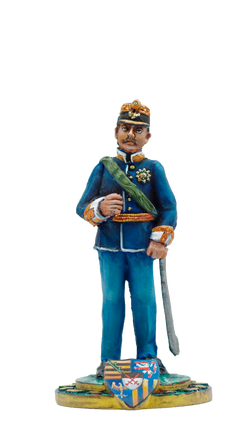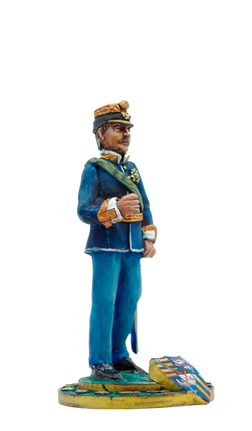
Johann Georg
Prince of Saxony
Prince Johann Georg Pius Karl Leopold Maria Januarius Anacletus of Saxony, Duke of Saxony (10 July 1869 – 24 November 1938) was the sixth child and second-eldest son of George of Saxony and his wife Infanta Maria Ana of Portugal and a younger brother of the Kingdom of Saxony's last king, Frederick Augustus III of Saxony. Johann Georg was a well-known arts expert and an avid art collector. Johann Georg was the sixth of eight children and the second son of George of Saxony, the penultimate king of Saxony, and his wife Infanta Maria Ana of Portugal. The prince was raised in Dresden and received a strict Roman Catholic upbringing. Johann Georg's early education was conducted by private teachers until 1881 when he began his military training. From 1889 through 1890, Johann Georg and his younger brother Maximilian studied law together in Freiburg im Breisgau. After switching to the University of Leipzig, Johann Georg mainly attended lectures on history and art history. In 1909, the prince received an honorary doctorate from the University of Leipzig. In October 1902 he was sent on a mission to the various courts of Europe to announce the accession of his father King Georg to the throne four months earlier. He was received by King Edward VII in London on 12 October, and also visited Windsor Castle. The Emperor of Austria appointed him Honorary Colonel of the 11th Infantry Regiment of the Austro-Hungarian Army in 1902, and the prince visited Vienna in January 1903 to acknowledge this honour and the good relation between the families.


The 11th Bohemian Infantry Regiment (German: Böhmisches Infanterie-Regiment Nr. 11) was a Czech infantry regiment of the United Army of Austria-Hungary. It was formed in 1629. It participated in the Austro-Turkish Wars, the Seven Years' War, the Napoleonic Wars and the Austro-Italian-Prussian War, as well as in the Hungarian Uprising. In Jaroslav Hašek's novel The Luck of the Brave Soldier Schweik, it is mentioned that the 11th Infantry Regiment, made up of "natives of the Pisec district", fought on the Eastern Front and surrendered to the Russians as prisoners of war.

The House of Wettin (German: Haus Wettin) was a dynasty of German kings, prince-electors, dukes, and counts that once ruled territories in the present-day German states of Saxony, Saxony-Anhalt and Thuringia. The dynasty is one of the oldest in Europe, and its origins can be traced back to the town of Wettin, Saxony-Anhalt. The Wettins gradually rose to power within the Holy Roman Empire. Members of the family became the rulers of several medieval states, starting with the Saxon Eastern March in 1030. Other states they gained were Meissen in 1089, Thuringia in 1263, and Saxony in 1423. These areas cover large parts of Central Germany as a cultural area of Germany. The family divided into two ruling branches in 1485 by the Treaty of Leipzig: the Ernestine and Albertine branches. The junior Albertine branch maintained most of the territorial integrity of Saxony, preserving it as a significant power in the region, and used small appanage fiefs for its cadet branches, few of which survived for significant lengths of time. The
Ernestine Wettins, on the other hand, repeatedly subdivided their territory, creating an intricate patchwork of small duchies and counties in Thuringia. The Albertine Wettins ruled as Electors (1547–1806) and Kings of Saxony (1806–1918), and also played a role in Polish history – two Wettins were Kingsof Poland (between 1697–1763) and a third ruled the Duchy of Warsaw (1807–1814) as a satellite of Napoleon I. After the Napoleonic Wars, the Albertine branch lost about 40% of its lands (the economically less-developed northern parts of the old Electorate of Saxony) to Prussia, restricting it to a territory coextensive with the modern Saxony (see Final Act of the Congress of Vienna Act IV: Treaty between Prussia and Saxony 18 May 1815). Frederick Augustus III lost his throne in the German Revolution of 1918.

Royal standard of the House of Wettin. A coat of arms banner of the Royal Saxon Army. It was used as a standard for the king or his guard. It was also hoisted when the King of Wettin arrived at the Dresden Residential Palace.
Awards: Sash and star of the Order of the Rue Crown (Hausorden der Rautenkrone).










